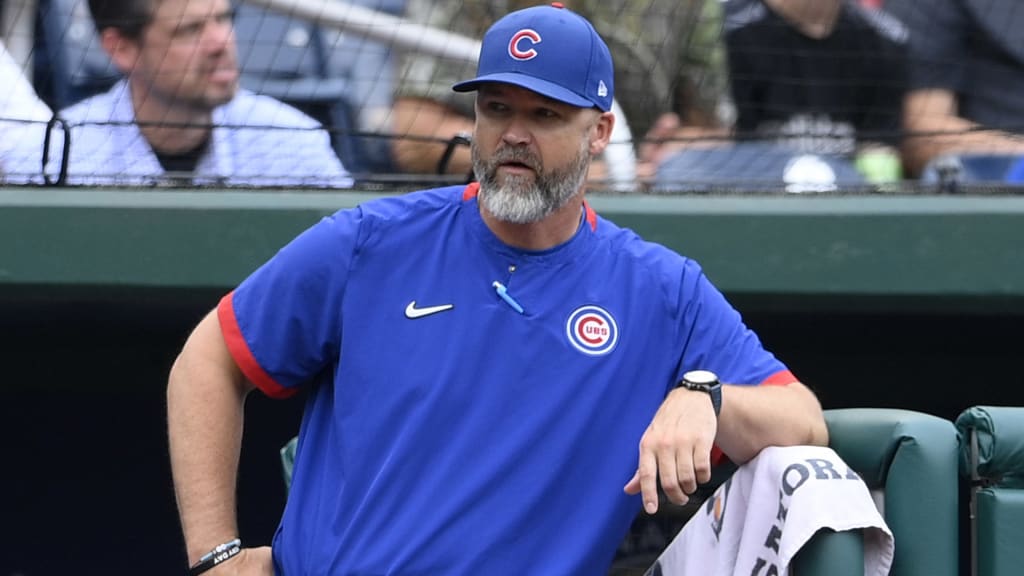
CHICAGO -- The Cubs pulled off a buzzer beater of sorts in early December, surprising the baseball world with the signing of free-agent pitcher Marcus Stroman before the offseason's pause.
Cubs president of baseball operations Jed Hoyer made it clear early on that this would be a winter defined by opportunistic spending. That pre-lockout deal gave a glimpse into Chicago's comfort zone as it weighs how to tackle the present, while considering the future.
"To be candid, I don’t think anyone had a real sense of how the market would play out when we started the offseason," Hoyer said after signing Stroman. "We didn't know if no one would make any signings or if it would be a flurry. And it ended up obviously being a flurry.
"And I think that flurry, in particular, was very focused on pitching. When you look at the market, it was very focused on pitching. You can't make plans and not alter them if things change."
With a new Collective Bargaining Agreement in place, here are five questions facing the Cubs as they react to the game's new structuring and the reopening of the marketplace:
1. Is the rotation set after adding Stroman and Wade Miley?
Adding rotation pieces was Hoyer's top priority heading into the offseason and he acted swiftly with the Nov. 5 move to claim Miley off waivers from the Reds. It fit that "opportunistic" approach, given Miley's skill (3.37 ERA in 163 innings in 2021) and cost ($10 million team option for '22).
That was followed by the three-year, $71 million contract that landed Stroman, who gave the Cubs a solid front three alongside Kyle Hendricks and Miley. From there, Chicago has Alec Mills, Adbert Alzolay, Justin Steele and Keegan Thompson as internal options.
Adding two veteran starters was the minimum. The rotation is now lengthened and there is upside in the remaining cast of contenders. There is room for one or more from that group to have a breakout year and upgrade the staff.
That said, the trio of Alzolay, Steele and Thompson are young on experience (269 2/3 career MLB innings combined) even as they hit prime age (each will turn 27 years old this year). Adding more depth should still be on the Cubs' to-do list, even if that comes via non-roster invitees at the very least.
2. Does the Stroman signing portend more big splashes in free agency?
The key to the Stroman contract was the structuring. It had a high average salary ($25 million in each of the '22-23 seasons and $21 million in '24, if the pitcher does not opt out after two years), but was a shorter-term pact. It struck that balance of trying to field a competitive team now, while not hindering long-term financial planning.
That offered a look into how the Cubs will probably view the rest of the upper-tier free agents. Yes, Stroman did some social media recruiting of free agent Carlos Correa, and the Cubs do need a shortstop, but Chicago may not want to commit to the kind of long-term deal likely required to reel him in.
Hoyer has stressed that "staying nimble" remains a goal for the Cubs, so addressing other needs may also have to fit within a similarly opportunistic framework.
3. Who will be the Opening Day shortstop?
Cubs fans would love nothing more than for an impact star like Correa to be standing at shortstop come Opening Day. Trevor Story is also on the open market. If the market creates a scenario in which one is willing to agree to a shorter pact, that would make Chicago a more realistic landing spot.
It is more likely that the Cubs look for a way to add to the middle-infield combination of shortstop Nico Hoerner and second baseman Nick Madrigal. Both missed significant time due to injury in 2021, so expecting them to haul a full workload in '22 might be asking a lot.
If those are the starters up the middle, manager David Ross will surely want help to provide rest. On Friday, the Cubs reached an agreement with Andrelton Simmons on a one-year deal worth $4 million (plus incentives), per a source. He can offer short-term help and strong defense at short and allow Ross to mix and match. And it does not necessarily end the Cubs' pursuit at that position.
4. What are the other remaining needs?
Beyond starting pitching and shortstop help, the Cubs could also stand to keep building up their outfield and bullpen inventory.
Chicago signed outfielder Clint Frazier to help, but Ross will need more depth as he plots how to piece together the platoon-based puzzle. In the 'pen, the Cubs could use some veteran arms to balance the wave of younger, less-experienced arms who will be jockeying for jobs and hoping to earn high-leverage innings.
Adding a backup catcher was also on this offseason's wish list, and the Cubs found a solution in veteran Yan Gomes. Chicago signed him to a two-year, $13 million contract, helping ease the workload of starter Willson Contreras.
5. Is this the year Brennen Davis reaches the Majors?
After impressing the Cubs at their alternate training site in 2020, Davis enjoyed a breakout campaign in '21 as he climbed three Minor League levels. He wowed with Double-A Tennessee, claimed the All-Star Futures Game MVP with a two-homer show and then posted a .933 OPS in his 15-game taste of Triple-A with Iowa.
That whirlwind season pushed Davis to Pipeline's No. 1 spot in the Cubs' Top 30 prospect rankings and up to No. 14 in the Top 100 list for all of baseball. The outfielder is not on the 40-man roster right now, but there is certainly potential for him to reach the Cubs' outfield (either in center or right) at some point this summer.
